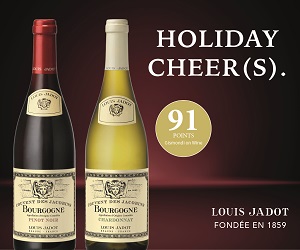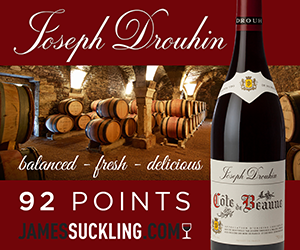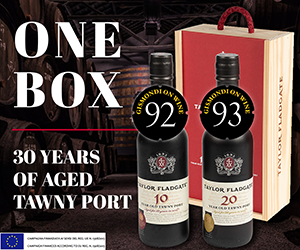BERNKASTEL/MOSEL, GERMANY Courtesy Kirk Wille, Clarity Communications, Inc.
BERNKASTEL/MOSEL, GERMANY
Courtesy Kirk Wille, Clarity Communications, Inc.
Once again, as they often do, the fickle weather patterns in our unpredictable climate toyed with our hearts and minds as the 2002 harvest approached. It had been a perfectly normal growing season, with fine weather during flowering and a sunny, dry summer. When September arrived, we were elated that the accusomted rains of the past several years did not come with it. Quite the contrary. It was a beautiful month of absolutely ideal weather. Our weekly postings of ripeness and acidity figures from selected vineyard sites detailed a vintage that was shaping up to be
even better than the much-ballyhooed 2001.
The devious weather gods dangled this carrot-on-a-stick in front of our faces right up until October 16, when they opened the skies and let the rains come. A full five weeks of mixed weather followed, stalling the brilliantly developing ripeness as the grapes took on water. Thankfully, acidity levels were extraordinarily high, which seems to have helped the grapes outlast the rainy weather. On the other hand, it meant we had to wait and wait while the ripeness inched up and the acidity ever so slowly
dropped to a level that we consider to be balanced.
With very little sun amid the on-and-off rainy and cloudy conditions, it wasn't until mid-November that we were able to start harvesting seriously. Even then, harvest consisted of dashing out between rain storms and picking grapes as fast as we could. With the exceptionally well-drained soils we have, especially in our steep, slate-covered Mosel vineyards, we found that even one cloudy day without rain was sufficient for the grapes to dry off enough for harvesting.
As you can imagine, the rainy weather also raised havoc with any botrytis that had started to develop. We knew that whatever it didn't quickly turn to "bad" botrytis it would simply dilute and destroy any chance of making a serious dessert wine. So we went through the vineyards early on and took out all of the good botrytis-affected fruit. It wasn't much, but the very first fruit we harvested yielded a few Gold Kapsel Auslese and some Beerenauslese, and left nothing but healthy fruit on the vines. Keeping tight control over the botrytis was very important if we were going to have any chance at all of making clean,
ripe wines at the lower Prädikat levels.
The vines stayed healthy and green well into November, which meant the assimilation process was still going on. That was a good sign because it meant that during the extended hang time, the grapes continued to draw in the unique characteristics of each of our vineyards, resulting in powerfully aromatic and densely flavored wines. And that's the real story here: the wines are superb. In spite of the headaches and uncertain weather, the wines we made in 2002 are wonderfully full of fruit and vibrant minerality. At this point they are even more open and captivating than the 2001s.
Of the grapes we harvested at Dr. Loosen, 70 percent were of Spätlese-level ripeness and 20 percent were in the Auslese category. Some of this will be declassified as we see how the wines develop, but we will have very good quantities of Kabinett and Spätlese, with a little bit of Auslese. What's really missing this year are the high-end wines: Gold Kapsel Auslese, Beerenauslese and Trockenbeerenauslese.
Because we had to take the botrytis out early, and the rains prevented any further botrytis development, only a few of these wines were made and in very small quantities.There is good news for dessert-wine fans, however. Since there was no further prospect of good botrytis, we left out more than the usual amount of vineyard for the possibility of Eiswein. In December
we had three excellent days (Dec. 10-12) of frost and we harvested more Eiswein than we've ever had in our cellars before, mostly from Erdener Treppchen and Bernkasteler Lay, and of excellent quality.
The whole situation with weather, ripeness and acidity was much the same at our J.L. Wolf estate in the Pfalz region. There again we took out the botrytis early to keep the remaining fruit healthy until it had a chance to ripen further while the acidity dropped to the desired level. With the drier, higher-alcohol wines we make in the Pfalz, we prefer the acidity to be a bit lower than it is in our Mosel wines. The first non-botrytis wines we harvested were the "village vineyard" wines (Wachenheimer Riesling and Forster Riesling). These came in with acidity levels slightly higher than optimum, so.we decided to do an
overnight cold maceration to bring them into balance.
We also had excellent ripeness in our "2nd growth" (Wachenheimer Belz, Gerümpel and Goldbächel) and "1st growth" (Hoheburg, Jesuitengarten, Leinhöhle, Pechstein and Ungeheuer) sites, where we make only one wine per vineyard. The sandy, gravelly soils in the Pfalz are also quite well drained, so it was no problem for the vines to dry quickly between rainy days. Plus, the harvest goes much faster here where the vineyards are flatter and easier to work (in fact, we have to keep separate harvest crews for the two estates because once a worker has been to the Pfalz, you can't get him to go back to the
ridiculously steep Mosel vineyards!).
The J.L. Wolf wines - particularly the top vineyards sites - need more time for fermentation and maturation, so we won't really know what the wines will be like for a few more months. All signs point to another excellent vintage and we'll keep you posted on their development. In the meantime, look for the 2001 vintage wines from J.L. Wolf, which are now being released.
All told, we are thrilled with the 2002 harvest. We've done a couple of early bottlings already at Dr. Loosen (Dr. L Riesling and Bernkasteler Lay Kabinett) and the wines show brilliantly. They are zippy, juicy wines with very pretty fruit aromas and a clean, crystalline texture. We're getting used to the annual headaches that our marginal climate ineveitably brings, but we know that the most lively, interesting wines come from borderline winegrowing areas such as this. Our only concern is that this
terrific vintage will be overshadowed by the media's exhultation for 2001. That would be a real shame as these 2002s are very nearly equal in quality and pure drinking pleasure.

 quicksearch
quicksearch






